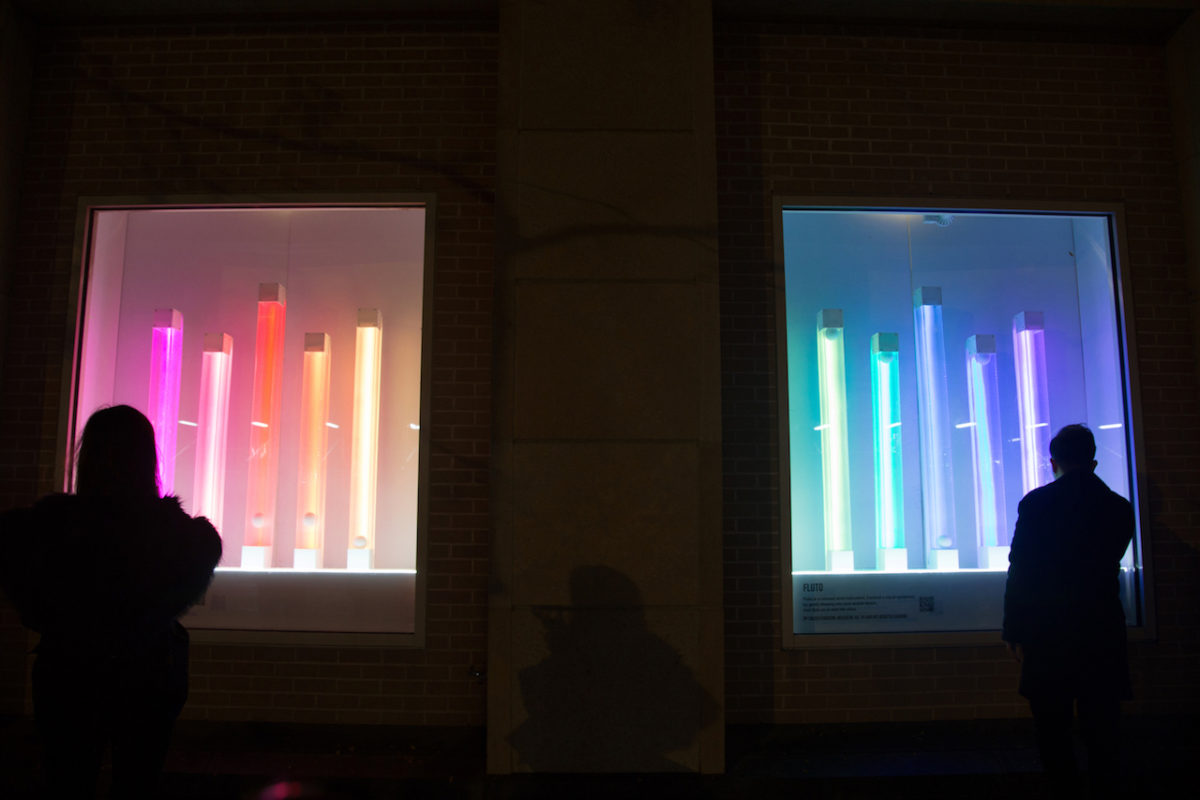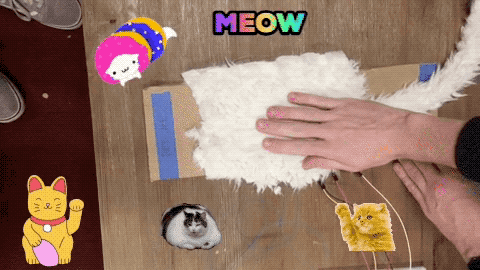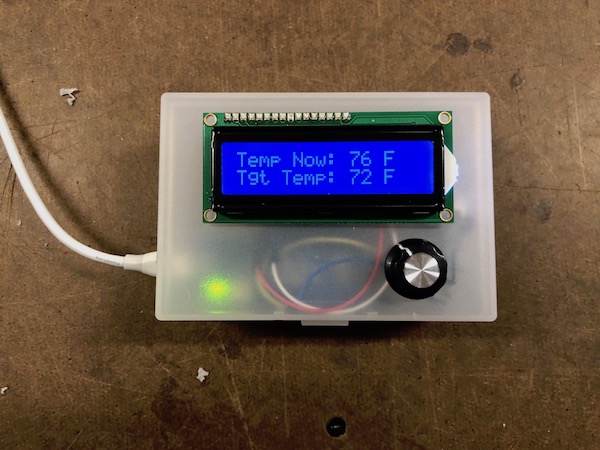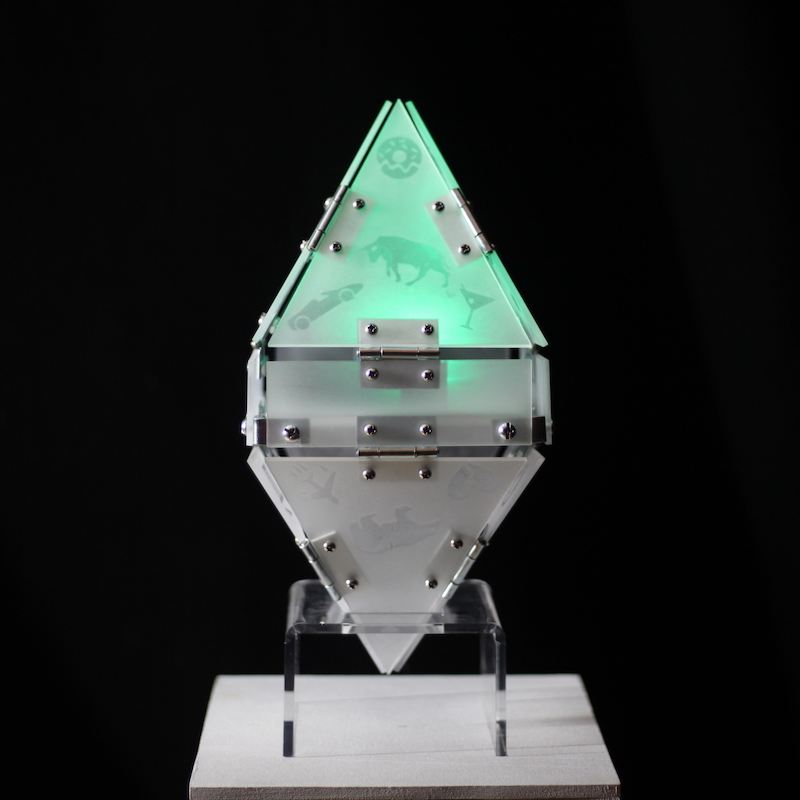Fluto is a life-size colossal wind instrument. With Fluto, you can conduct an audio-visual symphony with others through your mobile device.Continue readingFLUTO
Category: 995. Physical Computing
This post is a summary of the work and learnings from ITP’s Haptics weekend workshop class. Our team’s work ultimately culminated…Continue readingVibe, Buzz and Fuzz
The connected thermostat I was building earlier is now complete! 🌡🌡🌡 This thermostat works like a Nest Thermostat (though clearly…Continue readingA Simple Connected Thermostat
Cryptomania is a sculpture designed as commentary on the cryptocurrency pandemonium. It lights up based on the 1 hour price…Continue readingFrom API to LED: CRYPT0MANIA
Creating the physical enclosure for the CRYP0MANIA crystal was a project in and of itself. This post is about the…Continue readingFrom API to LED: Creating the Crystal
Lets call it CRYPT0MANIA – the connected crystal. This post is about the crystals digital details – because it works…Continue readingFrom API to LED: Digital Details
This week I converted a concept into a partial reality. The target for the first prototype of the enclosure was to create…Continue readingFrom API to LED: Prototype Enclosure & Decoration
As the technical feasibility of the API to LED project comes together, it is time to consider the physical specifications,…Continue readingFrom API to LED: Physical Specifications
Meet our new friend, WeMos D1, aka WeMo, aka WeBro WeMos is going to use its wifi chip to gather…Continue readingFrom API to LED: Our friend WeMos
Friday night! The perfect time for expanding on the API-to-LED work from last week. The improvement now offers a more…Continue readingFrom API to LED: Duplex Communication




